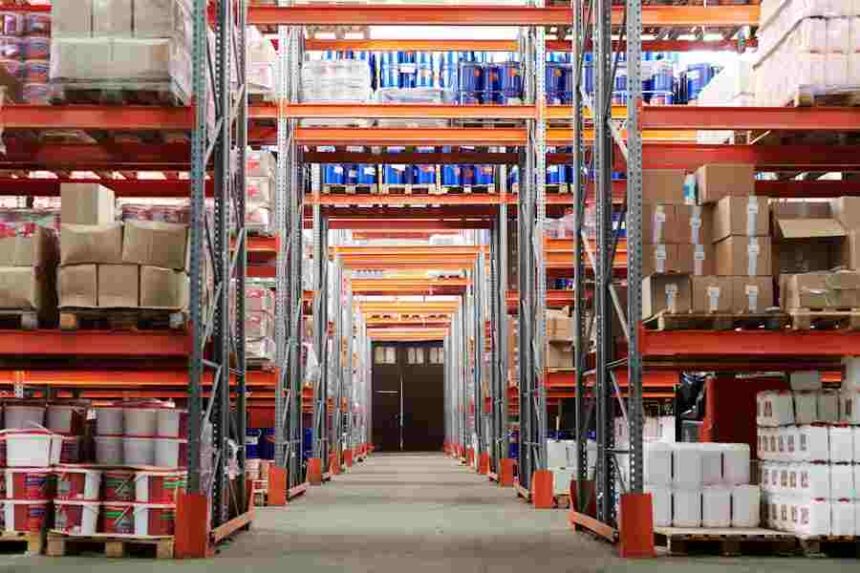The logistics industry is a thriving business both locally and internationally. This is primarily due to the rapid growth of E-commerce, which drives a high demand for third-party logistics companies.
Starting any business takes a lot of time, effort, and money. However, understanding the steps to follow when starting a logistics company will ensure you are on the right path to success. From creating a comprehensive business plan and budget outline to securing the necessary vehicles and additional equipment, including dollies and strapping for pallets, you can quickly turn your business dream into reality.
What is a Logistics Business?
Logistics involves handling, storing, and transporting products. Modern logistics companies manage supply chains, which begin with a producer or manufacturer and end with products being delivered to customers.
As the online retail world continues to grow, the demand for logistics and transportation companies grows alongside it. Many businesses, particularly small businesses, find it more cost-effective to outsource tasks like handling and shipping and use advanced tracking technology to monitor their products worldwide.
Step-By-Step Roadmap
Several vital factors must be considered when starting and building a logistics company to ensure business success.
Find Your Niche
Before you can start your logistics business, you need to establish the role you want your company to fill. You can either choose to specialise in one transport niche or work across a range of options that complement one another. When starting out, it may be more financially beneficial to start with just one to keep overhead costs low.
A fantastic starting step is researching the different industries in your area and understanding the local dynamics of supply and demand. Like any successful business, you need to fill a need. Understanding where the gap in the market exists will help guide you.
Develop a Business Plan
Creating a comprehensive business plan will force you to properly evaluate every aspect of your logistics business. It provides a fantastic opportunity to conduct thorough market research, helping you understand where gaps exist in your industry knowledge, identify key competitors, and establish your main service offerings.
You will also need to provide a detailed analysis of how your company will be financed. Your business plan will be used when seeking funding from banks and other financial investors, so including a detailed breakdown of initial costs and projected future expenses is crucial.
Your business plan should include a detailed overview, a thorough market analysis, rates, a viable marketing plan, a comprehensive financial plan, and future financial projections.
At this stage, you will also need to decide what type of business entity you want to establish. Your business will likely fall into three main categories: sole proprietorship, general or limited liability partnership (LLP), and limited liability company (LLC). Each option has attractive advantages and important disadvantages that will significantly impact the way your company operates, making it essential to select the best fit for your needs.
Licenses & Permits
Once your business plan is ready to go, you will need to obtain all the necessary permits and licenses required to operate legally in the city and country you live in. The rules will vary based on where you are located, so it will be best to check with the local government what paperwork will be needed.
When starting your business, you will need to get a federal tax ID or employer ID number. The government department responsible for collecting national tax in your country will typically have a process rundown on its website and links to start.
Transport and logistics companies solely exist to move people, animals and other valuable cargo from one location to another. You will be required to get a wide range of licenses and permits attached to the industry based on what you plan to transport. You will also need commercial vehicle registrations, and your drivers may be required to obtain their commercial driver’s licenses to operate your fleet. To ensure all your bases are covered, consulting with a lawyer specialising in your chosen niche may be worthwhile.
Funding
Opening a separate bank account and credit card is a fantastic way to keep better track of your business finances and expenses, making it easier to file for taxes when needed and allowing you to build credit.
Depending on the size of your small business, you may need to secure additional capital from a financial institution or investors. When looking to secure funding, you can explore several different avenues, including a small business loan from a private financial company, a business loan from the bank, capital funding from investors, or using your business credit card.
Build a Fleet
Whether it’s cars, vans, trucks, bikes or scooters, you will need to purchase some type of transportation to make your logistics company operational. Regardless of what you select, you need to ensure that the vehicles you purchase are in good condition and look professional, as they are an extension of your brand and the first thing potential customers see. While you don’t have to buy your vehicles brand new, you should not skimp on quality.
Ensuring you purchase the right vehicles for the job is another important consideration to get right. If you are handling a specific type of cargo, it is crucial that your vehicles can properly handle the load.
Marketing
Once your company is ready to launch, implement an effective and creative marketing strategy to get your brand on the radar of potential customers and clients. Conduct marketing campaigns on popular social media platforms like Facebook, Instagram, and YouTube, build a proper business website, and complete your company listings on sites like Google and Yellow Pages.
Attend local business fairs and networking events. Encourage customers to leave good reviews if they have positive experiences with your company. Ensure you continue to offer high-quality service, as word of mouth is a fantastic and free promotional tool.




